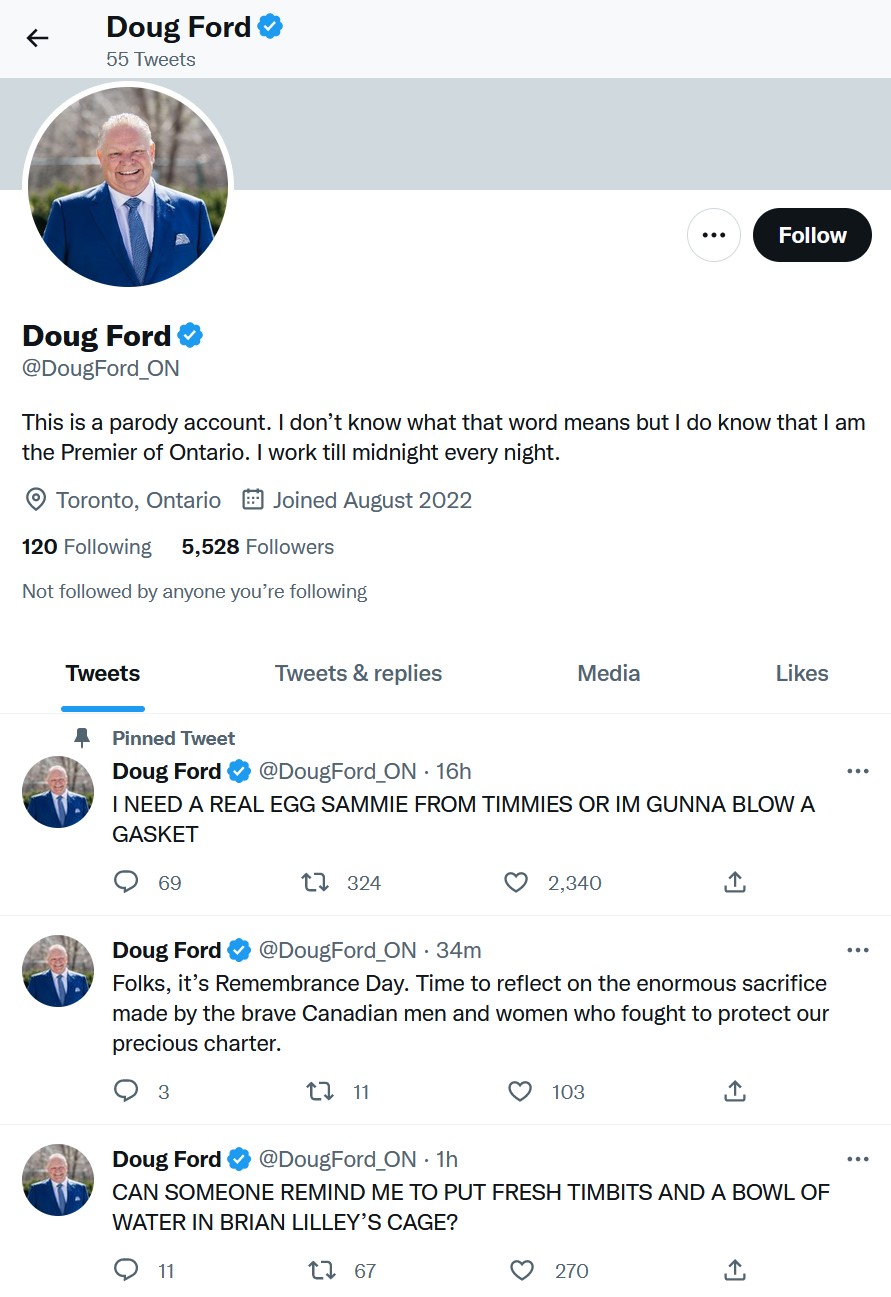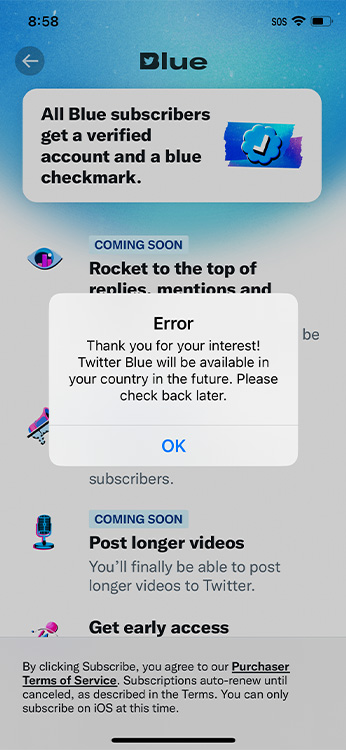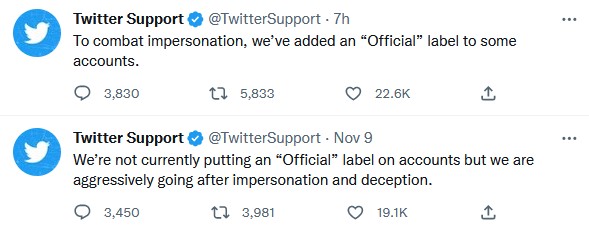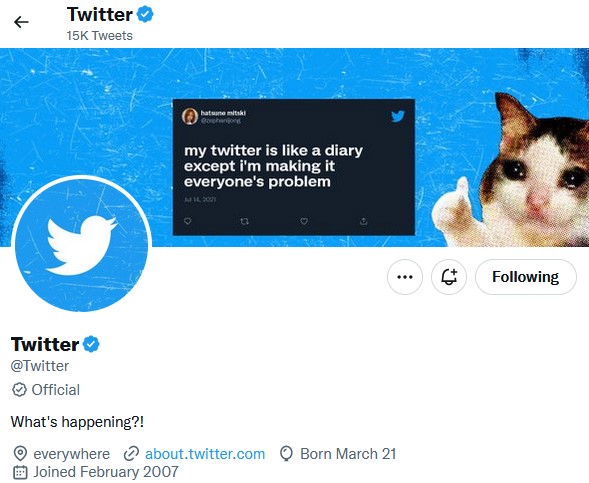Unsurprisingly, Twitter is chock-full of fake accounts sporting the new blue check that anyone can buy for a measly $8.
While Twitter seems to be suspending them quickly, it feels like a game of high-stakes whack-a-mole — the numbers are in the moles’ favour. For the terminally online, most of these accounts should be easy to spot. But for those who haven’t followed the real-time collapse of Twitter under its new overlord Elon Musk, these accounts could definitely trick you.
The Verge, Kotaku, and others reported on a variety of fake accounts for brands, athletes, and more popping up on Twitter in the hours after the new Blue subscription went live. Many of these accounts, including fake Nintendo, Valve, LeBron James, Donald Trump, and even Jesus Christ appear more legitimate thanks to the paid badge (Although to be fair, the Jesus account was an existing parody account, but it’s still quite funny to see Jesus verified on Twitter).
If you’re having a hard time with all these new blue check accounts, here are some tips to figure out which ones are legitimate and which aren’t.
How to spot legitimate Twitter accounts
Surprisingly, the most reliable way to check the legitimacy of any account on Twitter is through the blue checkmark. At first glance, the old verification badge and the new paid badge you get from subscribing the Twitter Blue (which costs $9.99/month in Canada) are identical. However, if you open an account’s profile and click or tap on those badges, a little pop-up will tell you whether the account was verified under the old system or if it was bought. This works across Twitter’s website and mobile apps.
-

-
Old verification badge
-
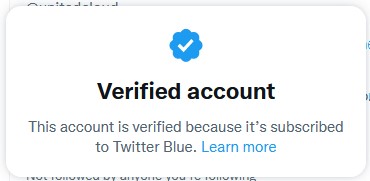
-
New paid badge
Of course, digging into an account’s profile page and tapping a tiny blue icon is a bit of a pain to do every time you’re sus of an account. Moreover, not every account with a traditional verification badge is trustworthy and not every account with a paid blue check is untrustworthy. So, it’s helpful to look for some context clues.
Things to consider include the handle (@), the content of tweets, and other details of the account, such as the number of followers. For the handle, keep an eye out for things like typos or slightly off spelling, or perhaps the use of certain characters that can look like others (such as I, l, |, or 1, although MobileSyrup’s site font makes those look different).
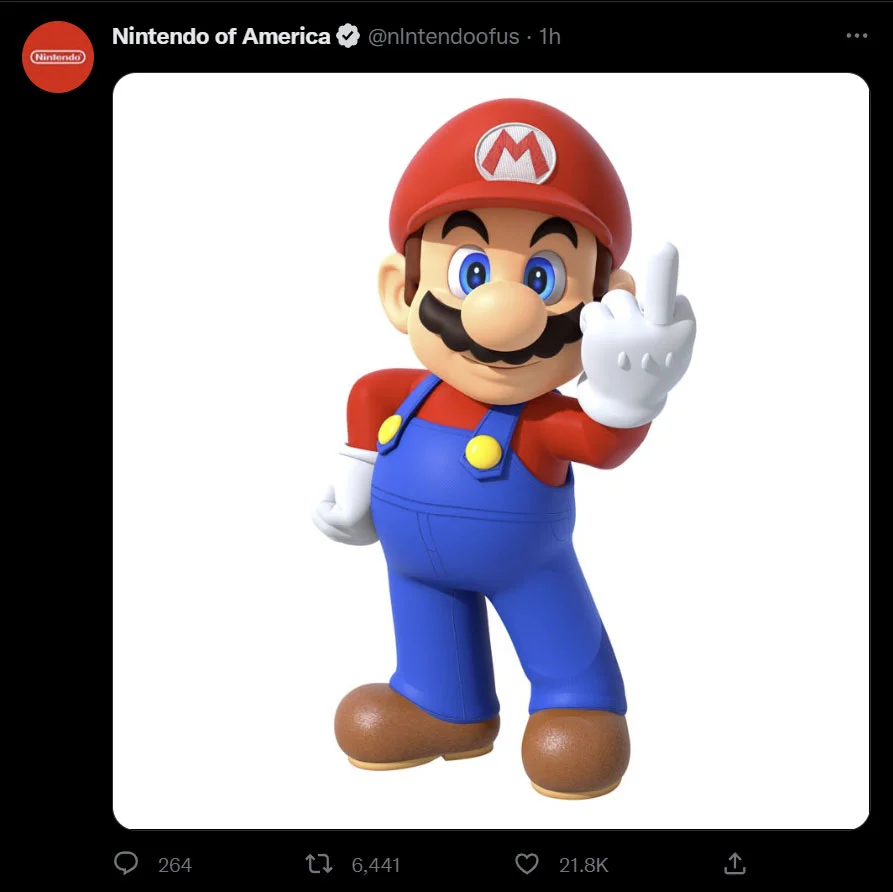
Fake Nintendo Twitter account (via Kotaku)
Tweet content can often prove helpful for detecting suspicious accounts. For example, a fake Nintendo account tweeted a picture of Mario flipping off the viewer. While funny, that tweet obviously didn’t come from a real Nintendo account. Other content clues include pushing people to click suspicious links (for example, a fake Twitter account telling people to click a weird link to sign up for Twitter Blue), or statements that just don’t make sense (like the fake LeBron James account announcing a plan to leave the Lakers).
Other account details, like when the join date, follower account, or the number of tweets can also help detect potential fakes. For example, if someone created a new Twitter account to mess with people, it might have a recent join date, a low number of followers, or a low number of tweets.
And if, after all that, you’re still not confident if the account is authentic, assume it isn’t and consider alternate options. For example, you could use a trustworthy source to find the actual Twitter account (for example, most companies include links to their official social channels on their websites). You can also try and verify the information in a tweet with a trustworthy source. And when in doubt, never click a link, even if it doesn’t look suspicious.
How we got here
If you haven’t been following along with Musk’s Twitter takeover turmoil, we’ve got a quick summary for you. If you have been following along, feel free to bow out now.
In short, one of Musk’s first actions after taking over the company (aside from laying off half the staff and then desperately begging some to come back because it turned out they were essential) was to revamp Twitter’s Blue subscription service. The new Twitter Blue boasts two changes: a higher price tag and access to the blue checkmark long used to designate if an account was authentic. Musk has promised other changes to come, which we’ll dig into in a moment.
The new Twitter Blue was supposed to launch over the weekend, but then Twitter quietly delayed the feature until November 9th to avoid interfering with the U.S. midterm elections. One of the main concerns raised about the new paid verification badge is that it would open the floodgates for impersonation and fake accounts. Bizarrely, Musk believes paying for verification will somehow fix Twitter’s spam problems. Musk even witnessed firsthand the problems with giving anyone a verification badge after a series of accounts impersonated Musk and made fun of him. Twitter is also now limiting new accounts from signing up for Blue, likely in an effort to tamp down on impersonations like this.
Before the rollout started on the 9th, Twitter briefly launched a second grey ‘Official’ badge to help users differentiate between legitimate accounts and fakes, effectively replacing the function of the blue check ahead of it becoming a Blue feature. Musk quickly killed the grey badge, calling blue checks the “great leveler [sic].” However, Twitter employees said the grey badge would still be applied to some accounts despite Musk’s tweets.
Finally, Musk has promised Blue will eventually get new features like priority in replies, mentions and search, reduced ads, and the ability to post longer videos. Longer videos might actually be a helpful benefit for some, while internal Twitter discussions revealed the ad reduction plan could lose the company money. However, giving Blue subscribers priority on the site risks disrupting what makes Twitter such a useful tool for many.
For the latest on Musk’s shenanigans at Twitter, follow MobileSyrup’s coverage here.



